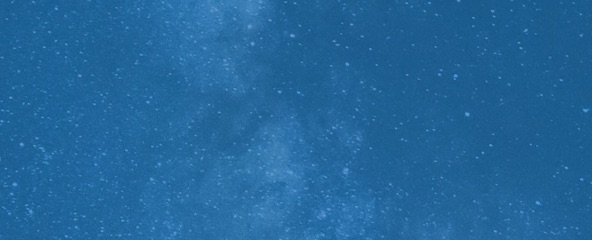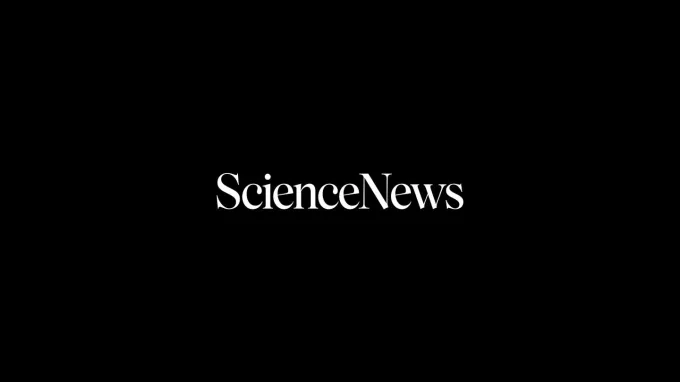Science News Magazine: Current Issue
Vol. 181 No. #12
Trustworthy journalism comes at a price.
Scientists and journalists share a core belief in questioning, observing and verifying to reach the truth. Science News reports on crucial research and discovery across science disciplines. We need your financial support to make it happen – every contribution makes a difference.
More Stories from the June 16, 2012 issue
-
 Humans
HumansCrime numbers may mislead
Criminologists argue that city safety rankings should consider underreporting and other sources of error in compiling statistics.
-
 Psychology
PsychologyWhen good moods go decisively bad
Positive feelings may lead seniors to weigh fewer options and make poorer choices in some situations.
By Bruce Bower -
 Physics
PhysicsPhysicists go totally random
Calculations suggest a way to boost the independence of information flow, a finding that could help in cryptography.
-
 Space
SpaceMore than one way to explode a star
New observations confirm two leading theories of type 1a supernova production.
By Nadia Drake -
 Health & Medicine
Health & MedicineRare neurons found in monkeys’ brains
Cells linked to empathy and consciousness in primates may offer clues to human self-awareness.
-
 Humans
HumansMaya wall calendar discovered
Classic-era structure displays rare calculations of lunar and planetary cycles.
By Bruce Bower -
 Astronomy
AstronomySun’s shock wave goes missing
Spacecraft observations redraw astronomers’ ideas about the local stellar environment.
By Nadia Drake -
 Life
LifeCulture results when chimps get cracking
Adjacent groups in Africa follow different traditions when it comes to opening nuts.
By Susan Milius -
 Life
LifeGene appears linked with a person’s daily rhythms
Variations could play a role in determining time of death, or help shift workers better adapt.
-
 Life
LifeGenes may influence body’s bacteria
Specific DNA variants have been found to be associated with the types of microbes that colonize a person’s body.
-

Retinal implants could restore partial vision
In lab tests on rat retinas, a photovoltaic chip helps display images through special goggles.
-
 Life
LifeGene study links stronger memories, PTSD
New finding may help explain why some people experience psychological problems after traumatic experiences.
-
 Health & Medicine
Health & MedicineEven moderate noise may harm hearing
Chronic, low-level sound exposure causes deficits in rats.
-
 Tech
TechParalyzed woman grips, sips coffee with robot arm
For the first time, a brain-computer interface is powerful enough to enable useful movement in human patients.
-
 Space
SpaceStellar superflares’ trigger challenged
Massive eruptions on sunlike stars might not require magnetic interactions from a big, hot, nearby planet.
By Nadia Drake -
 Life
LifeGood cholesterol may not be what keeps the heart healthy
Genetic study suggests that higher levels of HDL aren’t directly responsible for the lower risk of cardiovascular disease seen in population studies.
-
 Humans
HumansFrom cancer to quantum, teens’ scientific feats celebrated
Winners of the 2012 Intel ISEF show the promise of science for improving the world.
By Devin Powell -
 Life
LifeHow not to eat the wrong frog
Panamanian bats use an array of senses to keep from ingesting poison prey.
By Susan Milius -

Science Future for June 16, 2012
June 25–29 Check out summer camps on space, flight and more at the Center of Science and Industry in Columbus, Ohio. More dates listed at bit.ly/SFcosicamp June 25–August 13 Headfirst’s Imagination Science camps in the D.C. area cover rockets, crime scenes and robots. See bit.ly/SFdcscicamp July 2–6 “The Zoo and You” camp at Santa Ana […]
By Science News -

SN Online
BODY & BRAIN A new strategy boosts insulin production in mice. Read “Procedure offers hope in type 1 diabetes.” SCIENCE & SOCIETY A 17-year-old shows off his homemade nuclear fusion reactor (below) at the Intel International Science and Engineering Fair. See “At ISEF, fusion is hot.” MATTER & ENERGY The Leidenfrost effect allows physicists to […]
By Science News -

Science at 15,000 feet
It’s only natural that for her Ph.D. research, Ulyana Horodyskyj found herself rappelling down a Himalayan cliff. After all, she got bitten by the mountaineering bug at age 6, when she witnessed her first avalanche in the Swiss Alps. The Ngozumpa glacier in Nepal is covered in dirt and debris churned up as the glacier […]
-

Learning From the Octopus: How Secrets from Nature Can Help Us Fight Terrorist Attacks, Natural Disasters, and Disease by Rafe Sagarin
Octopus defenses, marmot lie detection, salmon suicide and other natural phenomena provide inspiration for ways to improve national security. Basic Books, 2012, 320 p., $26.99
By Science News -

Transit of Venus: 1631 to the Present by Nick Lomb
This illustrated history recounts the scientific contributions and adventures of the 18th and 19th century astronomers who traveled the world to observe Venus passing in front of the sun. The Experiment, 2011, 228 p., $24.95
By Science News -

Dolphin Confidential: Confessions of a Field Biologist by Maddalena Bearzi
A marine biologist chronicles her life in the field and offers an insider’s view of how scientists study marine mammals in the wild. Univ. of Chicago, 2012, 216 p., $26
By Science News -

Evolution in a Toxic World by Emily Monosson
A toxicologist traces how life evolved to deal with toxic substances and how this plays into chemical exposures today. Island Press, 2012, 232 p., $35
By Science News -

BOOK REVIEW: Tubes: A Journey to the Center of the Internet by Andrew Blum
Review by Sid Perkins.
By Science News -

-

-

-
 Earth
EarthDefying Depth
How deep-sea creatures, and close relatives, survive tons of water weight.
By Susan Gaidos -

Letters
Dark matter inspiration On reading Tom Siegfried’s editorial “Dark matter nothing to fear, if it’s there or not” (SN: 5/19/12, p. 2):As into the universe I did stare I met a particle that wasn’t there It wasn’t there again today Oh, I wish it would go away.Tom Derderian, Winthrop, Mass. Reality bits Regarding “Bits of […]
By Science News -

Science Past from the issue of June 16, 1962
COMPUTER CALCULATES B.C. POSITIONS OF PLANETS — The positions of the planets, the moon and the sun from 601 B.C. to 1 A.D. have been calculated using an electronic “brain,” or computer. The astronomical tables are expected to provide scholars with new insight in the study of ancient civilizations…. Dr. O. Neugebauer of Brown University, […]
By Science News -

The Brain: Big Bangs, Behaviors, and Beliefs by Rob DeSalle and Ian Tattersall
Superbly simple illustrations by Patricia J. Wynne complement this road map to the brain’s evolution. Yale Univ., 2012, 368 p., $29.95
By Science News
